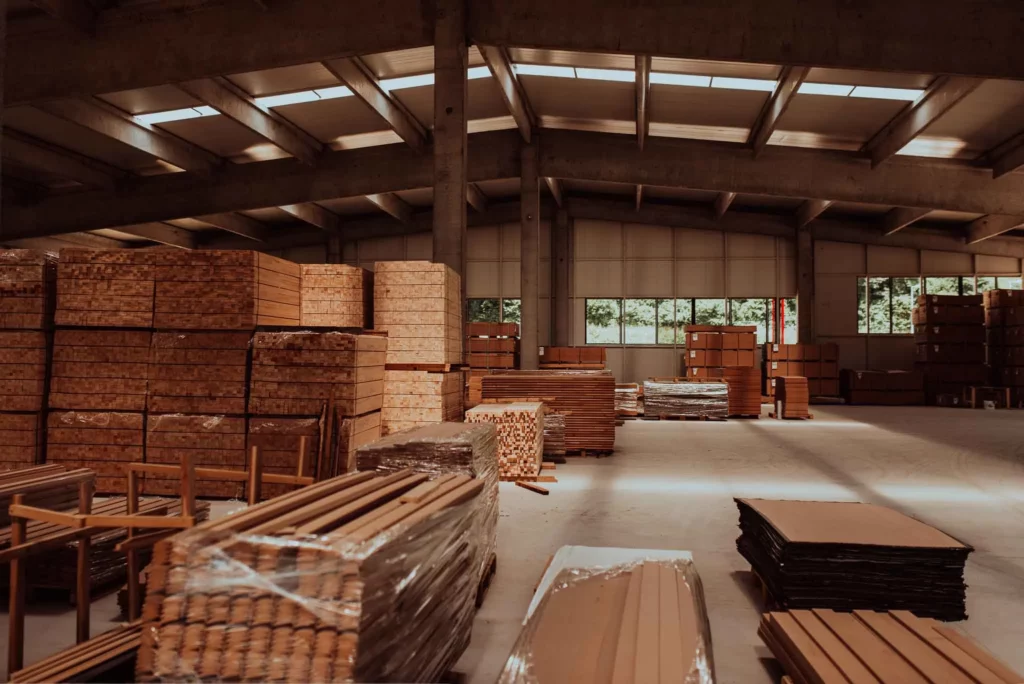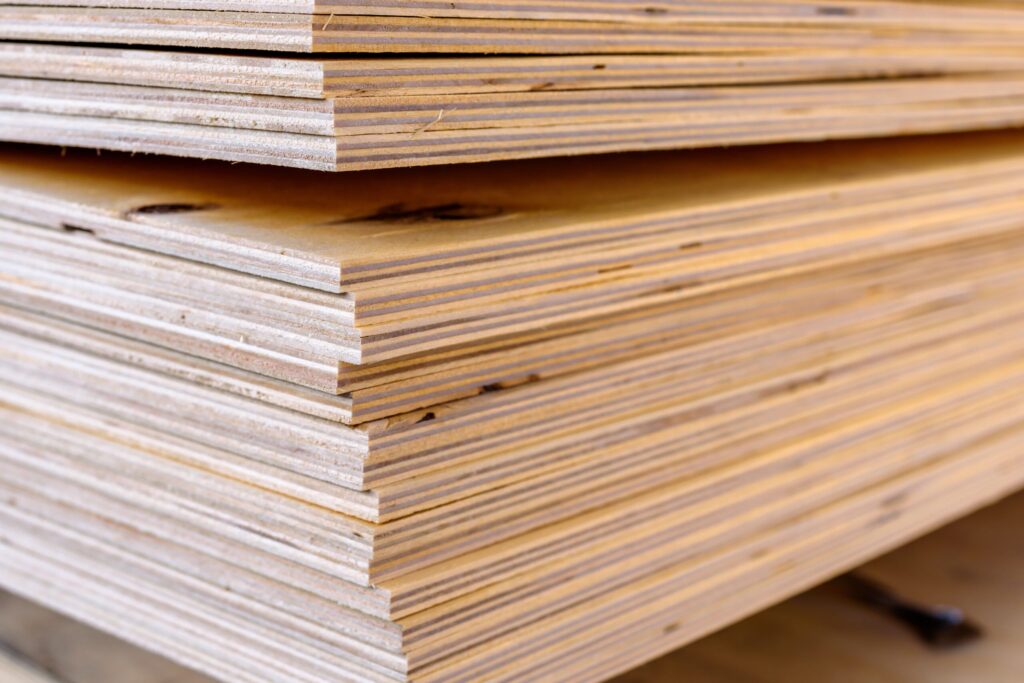When it comes to construction materials, plywood stands out for its versatility and strength. Among the various types available, F17 plywood has gained prominence for its exceptional durability and structural integrity. This guide aims to provide an in-depth understanding of F17 plywood, its benefits, applications, and best practices for use in building projects.
What is F17 Plywood?
F17 plywood is a high-grade structural plywood that is often used in construction and building projects. The designation ‘F17’ refers to the plywood’s strength classification, which indicates that it can withstand significant loads and stresses. This makes it an ideal choice for applications where strength and durability are paramount.
F17 plywood stands out as a premier choice for builders seeking a durable, versatile, and reliable material. Its exceptional strength, cost-effectiveness, and eco-friendly potential make it an ideal option for a wide range of construction applications. By following best practices in handling, cutting, and installation, builders can maximise the benefits of F17 plywood and ensure the longevity of their projects.
Composition and Manufacturing Process
F17 plywood is made from layers of wood veneer that are glued together in a cross-laminated fashion. This method not only enhances its strength but also reduces the likelihood of warping or splitting. The veneers are typically sourced from durable hardwood species, ensuring that the final product is both robust and reliable.
During the manufacturing process, the plywood undergoes rigorous testing to ensure it meets the F17 strength classification. This includes assessments of its shear strength, bending strength, and overall structural integrity. As a result, builders can trust F17 plywood to perform well under various conditions. Furthermore, the adhesives used in the bonding process are often formulated to be resistant to moisture, which adds an extra layer of protection against environmental factors that could compromise the plywood’s integrity over time.

Applications of F17 Plywood
F17 plywood is widely used in a variety of construction applications. Its strength makes it suitable for structural elements such as beams, joists, and flooring. Additionally, it is often employed in the construction of formwork for concrete, where it provides a sturdy base that can withstand the weight of wet concrete.
Beyond structural applications, F17 plywood is also used in furniture making, cabinetry, and even decorative features. Its aesthetic appeal, combined with its durability, makes it a popular choice for both functional and decorative purposes. In recent years, designers have embraced F17 plywood for its versatility, using it in innovative ways such as creating custom shelving units and unique wall panels that add character to residential and commercial spaces alike. The natural grain of the wood veneer can be enhanced with various finishes, allowing for a range of looks from rustic to modern, catering to diverse design preferences.
Benefits of Using F17 Plywood
The advantages of using F17 plywood in construction are numerous. From its strength to its versatility, this material offers builders a range of benefits that can enhance the overall quality of a project.
Exceptional Strength and Durability
One of the primary benefits of F17 plywood is its exceptional strength. Rated to withstand heavy loads, it is ideal for use in structural applications where safety and reliability are crucial. This strength is complemented by its durability; F17 plywood is resistant to wear and tear, making it suitable for high-traffic areas.
Furthermore, the cross-laminated design of F17 plywood helps to distribute loads evenly, reducing the risk of failure under stress. This characteristic is particularly important in construction, where structural integrity is non-negotiable. The ability to resist warping and twisting also makes F17 plywood a preferred choice for builders, as it maintains its shape and performance over time, even in varying environmental conditions. This stability is essential for projects that require precision and longevity, such as flooring, roofing, and wall sheathing. Learn more about precision on https://blog.stulz-usa.com/precision-cooling-vs-comfort-cooling
Cost-Effectiveness
While F17 plywood may come at a higher initial cost compared to lower-grade plywood, its long-term benefits often outweigh the upfront investment. The durability and strength of F17 plywood mean that it is less likely to require repairs or replacements over time, ultimately saving money in the long run.
Additionally, its versatility allows for a wide range of applications, reducing the need for multiple types of materials. This can streamline the building process and further enhance cost-effectiveness. For instance, F17 plywood can be used in both residential and commercial projects, from framing to cabinetry, making it a practical choice for builders looking to simplify their material selection. Its ease of handling and installation also contributes to reduced labour costs, as fewer materials typically mean less time spent on-site. Moreover, the aesthetic appeal of F17 plywood, with its fine grain and smooth finish, allows it to be used in visible applications without the need for extensive finishing work, further adding to its value in construction projects.
Best Practices for Working with F17 Plywood
To maximise the benefits of F17 plywood, it is essential to follow best practices during installation and maintenance. Proper handling, cutting, and sealing can significantly extend the lifespan of the material.

Handling and Storage
When handling F17 plywood, care should be taken to avoid damage. It is advisable to lift sheets rather than drag them to prevent delamination or surface scratches. Additionally, plywood should be stored in a dry, flat area to prevent warping or moisture absorption.
Using protective coverings during transport and storage can also help maintain the integrity of the plywood. If exposure to moisture is unavoidable, it is crucial to ensure that the sheets are properly dried before installation. Furthermore, it is beneficial to stack the plywood sheets with spacers in between to allow for air circulation, which can further reduce the risk of moisture build-up and subsequent damage. This method not only preserves the quality of the plywood but also makes it easier to access individual sheets when needed.
Cutting and Installation Techniques
Cutting F17 plywood requires precision to ensure clean edges and to avoid splintering. Using a fine-toothed saw is recommended, and it is advisable to make cuts on the finished side to minimise damage. When installing, it is important to use appropriate fasteners that are compatible with plywood to maintain its structural integrity.
Additionally, allowing for expansion gaps during installation can help accommodate any movement that may occur due to changes in temperature or humidity. This practice is particularly important in areas with fluctuating environmental conditions. It is also worth noting that pre-drilling holes for screws can prevent splitting and ensure a more secure fit. Moreover, applying a suitable sealant to the edges of the plywood can provide extra protection against moisture ingress, thereby enhancing its durability and performance in various applications. These meticulous steps not only contribute to a more robust installation but also ensure that the aesthetic qualities of the plywood are preserved over time.
Environmental Considerations
As sustainability becomes an increasingly important consideration in construction, the environmental impact of materials is under scrutiny. F17 plywood, when sourced responsibly, can be an eco-friendly choice for builders.
Sustainable Sourcing
Choosing F17 plywood that is certified by organisations such as the Forest Stewardship Council (FSC) ensures that the wood has been sourced from sustainably managed forests. This not only supports responsible forestry practices but also contributes to the preservation of ecosystems. Sustainable sourcing practices help to maintain biodiversity, as they often involve careful management of forest resources to protect the habitats of various species. Furthermore, by prioritising local timber sources, builders can reduce transportation emissions, further enhancing the environmental benefits of using F17 plywood.
Moreover, the longevity of F17 plywood means that it is less likely to contribute to waste over time. By opting for durable materials, builders can reduce the frequency of replacements and repairs, further minimising their environmental footprint. The inherent strength of F17 plywood also allows for innovative design possibilities, enabling architects to create structures that are not only aesthetically pleasing but also structurally sound and efficient. This versatility can lead to more sustainable building practices, as it encourages the use of fewer materials while achieving the desired performance. To learn more about environmental click here.
Recycling and Disposal
At the end of its life cycle, F17 plywood can often be recycled or repurposed, depending on its condition. Many recycling facilities accept plywood, allowing it to be transformed into new products rather than ending up in a landfill. This not only conserves resources but also reduces the demand for new materials. Additionally, some creative initiatives have emerged, where reclaimed plywood is used in artistic projects or community furniture, showcasing the potential for upcycling and creative reuse. This not only diverts waste from landfills but also fosters a culture of sustainability within communities.
Furthermore, the disposal process of F17 plywood can be managed in an environmentally conscious manner. Builders and contractors are increasingly encouraged to implement waste management strategies that include sorting materials on-site, ensuring that any unusable plywood is directed towards appropriate recycling channels. By raising awareness about the importance of proper disposal and recycling, the construction industry can play a pivotal role in reducing overall waste and promoting a circular economy, where materials are kept in use for as long as possible.
Conclusion
As the construction industry continues to evolve, embracing high-quality materials like F17 plywood will be essential for creating structures that not only meet current standards but also stand the test of time. Whether for residential or commercial projects, F17 plywood is a wise investment for those prioritising durability and performance.
Read more at: F14 Grade Plywood Understanding Strength Ratings for Heavy-Duty Builds

